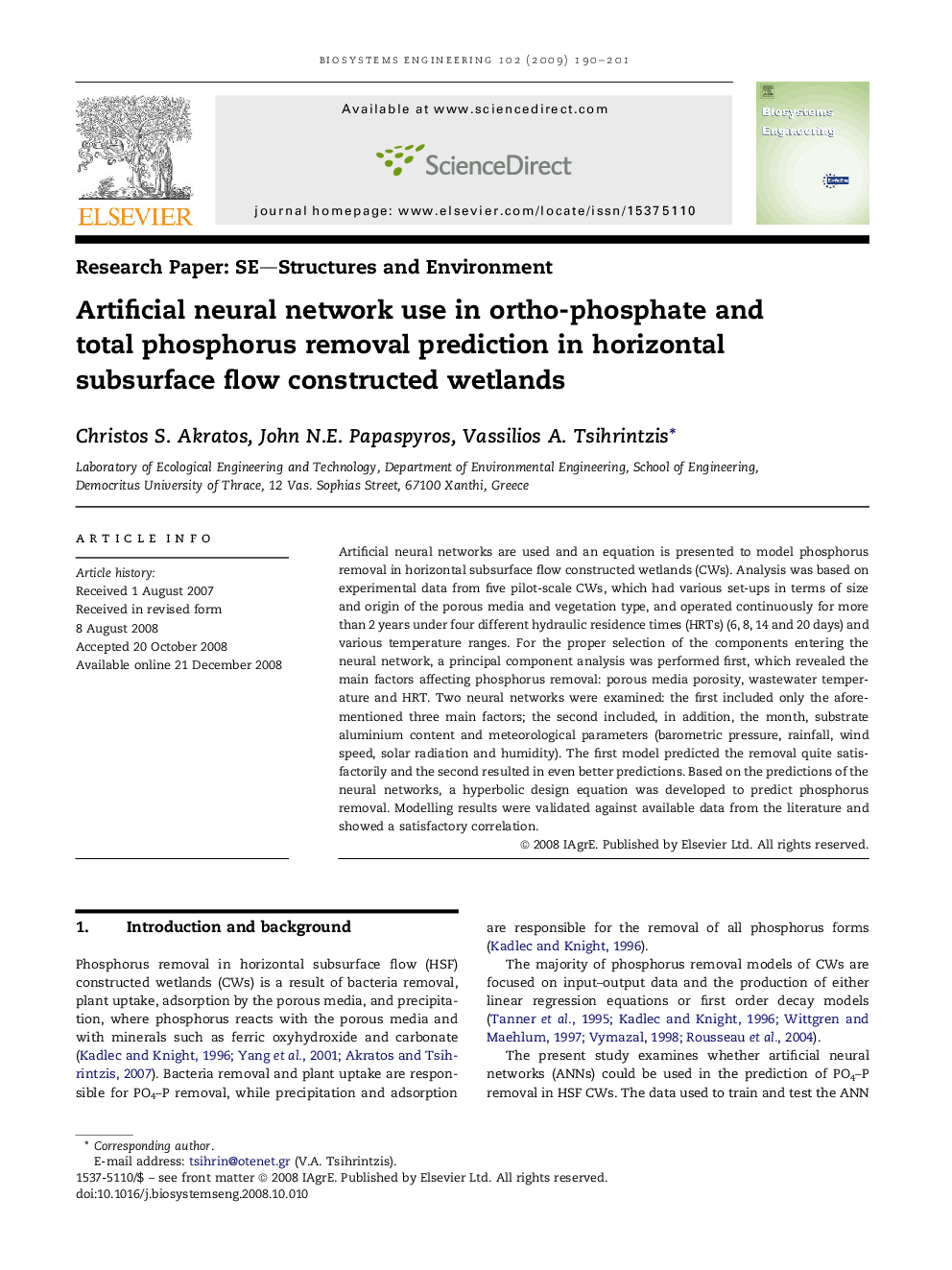| Article ID | Journal | Published Year | Pages | File Type |
|---|---|---|---|---|
| 1712189 | Biosystems Engineering | 2009 | 12 Pages |
Artificial neural networks are used and an equation is presented to model phosphorus removal in horizontal subsurface flow constructed wetlands (CWs). Analysis was based on experimental data from five pilot-scale CWs, which had various set-ups in terms of size and origin of the porous media and vegetation type, and operated continuously for more than 2 years under four different hydraulic residence times (HRTs) (6, 8, 14 and 20 days) and various temperature ranges. For the proper selection of the components entering the neural network, a principal component analysis was performed first, which revealed the main factors affecting phosphorus removal: porous media porosity, wastewater temperature and HRT. Two neural networks were examined: the first included only the aforementioned three main factors; the second included, in addition, the month, substrate aluminium content and meteorological parameters (barometric pressure, rainfall, wind speed, solar radiation and humidity). The first model predicted the removal quite satisfactorily and the second resulted in even better predictions. Based on the predictions of the neural networks, a hyperbolic design equation was developed to predict phosphorus removal. Modelling results were validated against available data from the literature and showed a satisfactory correlation.
